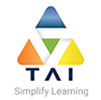IT ASSET MANAGEMENT (ITAM) forms an important element in a business strategy enabling cost control, financial and operational risk reduction and improved business value in the IT asset lifecycle, including all aspects of hardware and software used in an organization.
About IT Governance Awareness
Who should attend this training?
A successful ITAM program involves several departments in your organization such as budget managers, IT service departments and finance. The ITAM Foundation course is designed for all key personnel in these functions. We recommend that the course is attended by several employees from these areas in order to enable a successful and coherent ITAM focus throughout your enterprise, as well as individuals can also benefit from this foundation course.
Course Outline
ITAM introduction:
- Definition, purposes and objectives
- Why do your organization need ITAM?
- Introduction to the four key areas: Hardware Asset Management, Software Asset Management, Services & cloud Asset Management, People & Information Asset Management
- The IT Asset lifecycle and its impact on your business
- The key roles in ITAM – stakeholders, functions, roles and responsibilities
- Typical business issues and challenges in the ITAM workflow
- Introduction to ITAM best practices, ISO55000 and ITSM
Hardware Asset Management (HAM) introduction:
- The concept, purpose and benefits of HAM
- The HAM lifecycle in your organization from acquisition through to disposal
- Request and approval processes, procurement and lifecycle management, redeployment and disposal management
- The placement of HAM in the ITAM ecosystem
- Mobile device (asset) management aspects of HAM
- The best practices of HAM (ISO and ITSM)
- The tool reflections of HAM
Software Asset Management (SAM) introduction:
- Definition and objectives
- SAM best practices and framework
- The business value of SAM
- SAM from request to acquisition through disposal
- Key roles and stakeholders in a SAM program
- The placement of SAM in the ITAM ecosystem
- The concept of compliance
- The risks/costs related to software audits
- Organizational pitfalls and challenges in the SAM process
- IT service Management and ISO19770 approach within SAM
DAY 2
Services and Cloud Asset Management introduction:
- The concept of services and cloud services
- The costs, challenges and benefits associated with Services and Cloud services
- Definition and objectives within Services and Cloud Asset Management (SEAM)
- The contractual issues as assets in SEAM
- The pitfalls and benefits from SEAM
- ITAM best practices in a SEAM context
- The placement of SEAM in the ITAM ecosystem
- Key roles and stakeholders in a SEAM program
- Compliance in a Cloud perspective
People & Information Asset Management (PINAM) introduction:
- Definition and objectives
- How to define Information and People as assets?
- Security and risk control (information sharing, employees leaving the organization, loss of mobile devices, access regulations, etc.)
- BYOD in a People and Information Management perspective
- How do mobile users use their devices and content? Benefits and pitfalls
- Policy Setting – security policies for content, users and mobile devices
ITAM Key findings and conclusions:
- The best practices in the ITAM framework
- How to assess and understand the ITAM maturity in your organization
- The interface between the four key ITAM areas (HAM, SAM, SEAM, PINAM)
- Effective communication of your ITAM goals to the key stakeholders in your organization
- ITAM integration with the organizational key business drivers and goals
Call Now- +91-921-276-0556


